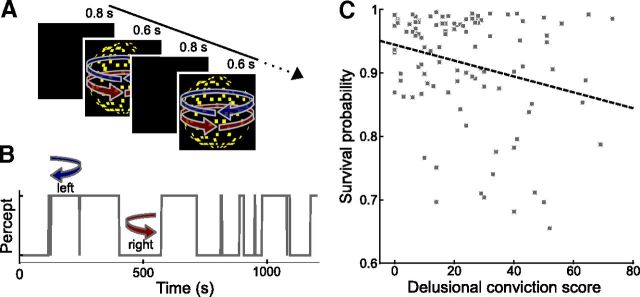Figure 1.
Delusional ideation and perceptual stability. A, Schematic illustration of Behavioral Experiment 1. Sensory predictions were induced by repeated presentation of an ambiguous DK that can be perceived as a sphere rotating either leftward or rightward. The stimulus was presented repeatedly for 0.6 s interleaved by blank screens of 0.8 s duration. Upon each occurrence of the stimulus, participants reported the perceived rotation direction by button press. B, Perceptual time course from one exemplary individual. Due to the stabilizing effect of endogenous predictions that are automatically built up during intermittent presentation of the ambiguous stimulus, participants tended to have the same percept across many successive presentation cycles. C, Correlation between tendency toward delusional convictions and perceptual stability (r = −0.26, p = 0.004, product-moment correlation, p value based on 10,000 permutations). Tendency toward delusional convictions was measured with a validated questionnaire (Peters et al., 1999). Perceptual stability was calculated as the percept survival probability from one presentation cycle to the next. Higher values indicate higher perceptual stability. Each dot represents one participant. The dashed line illustrates the fitted regression line.

